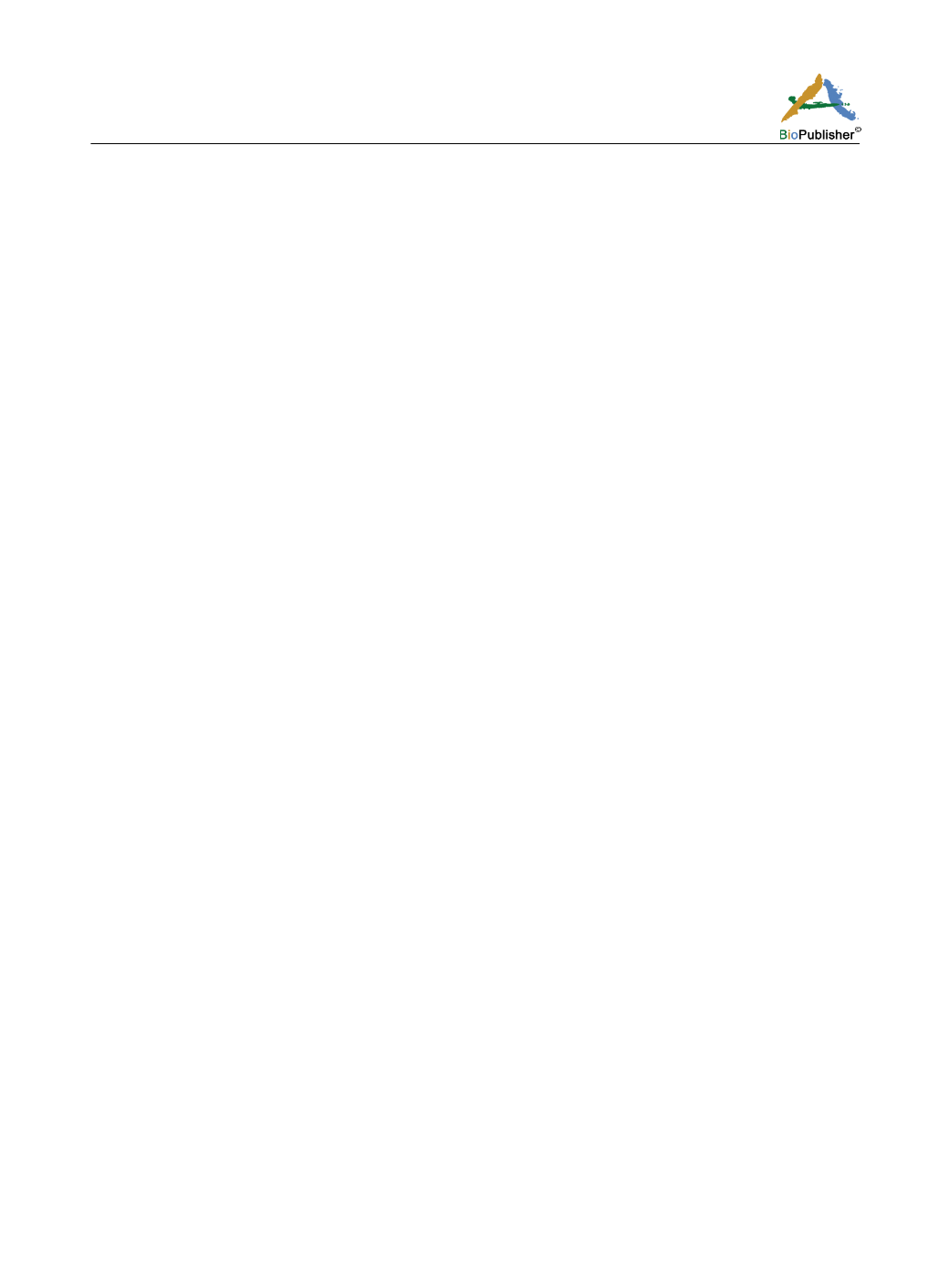
Bt Research 2015, Vol.6 No.2 1-10
ISSN 1925-1939
7
adult mites were sensitive to the
Btk
-toxin.
As seen in the present report, in comparison to the LB
control,
Btk
produced mostly large crystals during SSF.
Until this report, no report is available regarding the
efficacy of
Bt
against the coconut mite,
A. guerreronis.
From the probit, the dried and powdered form of
fermented crude matter with a concentration of 1.88
μg/cm
2
was found 100% efficient to control the mites.
Materials and Methods
Bt
strain
The standard culture,
Bacillus thuringiensis
subspecies
kurstaki
(
Btk
) was procured from the
Institute of Microbial Technology, Chandigarh, India
(strain: BA 83B; MTCC No. 868) and maintained in
the conventional Luria-Bertani (LB) medium.
Inoculum and media
Media and crystal production protocols were already
published by us (Smitha et al., 2013a; Smitha et al.,
2013b). Briefly, two types of media were used for the
production of crude toxin. The first one was the
standard LB liquid medium (used as control), and the
second one was the LB supplemented with 10% (w/v)
potato tuber flour; this proportion was standardized, as
we already reported (Smitha et al., 2013a, b). Prior to
inoculation, both media were autoclaved (at 121
o
C
for 20 min). The seed culture (12 h) contained
approximately 6.5 x 10
7
colony forming units per mL.
Five µl of this seed culture was used as inoculum for
every 1 mL LB medium or for every 1 mL LB used to
make 10% potato flour supplemented LB. Both media
were incubated in an environmental (temperature and
humidity controlled) shaker (Scigenics Biotech, India)
at 125 rpm and 37
o
C,
i.e.,
submerged fermentation
(SmF). After initial 12 h fermentation, cultivation
strategy was modified for potato flour supplemented
medium as already described (Smitha et al., 2013a).
For making the potato flour to supplement LB, the
scaly outer rind of locally available mature potato
tuber was removed, cut into pieces and dried well in
an oven (60
o
C for 48 h), and ground into flour using a
mixer-grinder. Analytical- and bacteriological-grade
chemicals from Chromous (India), Genei (India),
Himedia (India), Merck India Ltd., Qualigens (India)
and Sigma-Aldrich (USA) were used for the study.
Solid-state fermentation (SSF)
In order to increase the production of
δ-
endotoxin,
after 12 h initial incubation of potato flour
supplemented medium, the resultant semi-solid
viscous fermented matter with embedded
Btk
cells
was centrifuged (1000 ×
g
for 10 min) to obtain
wet-solid pellet with no free solution. The resultant
supernatant was used for harvesting extracellular
enzymes (Smitha et al., 2013b), and the solid-pellet
was collected aseptically and incubated further up to
72 h (37
o
C) to harvest crude
Btk
toxin (
i.e.,
mixture
of endospore and
δ-
endotoxin). The
δ-
endotoxin yield
was monitored at 12 h intervals. However, LB control
was incubated continuously in the shaker up to 72 h.
Selection of palms for collecting coconut buttons
Coconut palms of about 10 m height growing near
Calicut University Campus (Calicut University
Botanical Garden, Villunnial and Kakkanchery
(geographic coordinates: 11°9’N; 75°53’E) at 45-50
M altitude were selected for the present study.
Collections were made at about 10 AM in summer
(April-May) days with an average day temperature
~33
o
C. It is during this time that maximum infestation
of the mite is observed in Kerala, the State in India
where this work was accomplished.
Collection of coconut buttons
The healthy coconut buttons of about 1 month old
from un-infested palms were collected every day and
used afresh for the culturing of
A. guerreronis.
Hundreds of coconut buttons were used for culturing
the mites every week, and the culture conditions were
standardized prior to bioassay.
Culturing of
A. guerreronis
Mites were collected from infested nuts (Fig. 1).
Commercially available glass tubes (borosil) of 5 cm
diameter were bored and cut as rings with internal
diameter of 2.5, 3, 3.5, and 4 cm with a height of 1.5
to 2.5 cm and 0.5 to 1 cm thickness (Fig. 2). Cover
glasses of 1 mm thickness were suitably cut, and used
as lids for these culture rings. Coconut buttons
(developing small nuts) of about 1 month old were
selected from non-infested healthy palms and the


